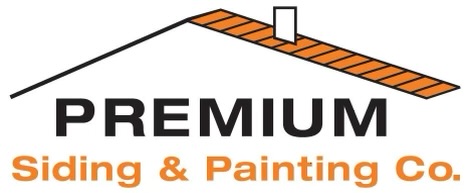When it comes to choosing the best siding for your home in Texas, the decision is not one to be taken lightly. Texas weather is known for its extremes, from scorching summers to unpredictable storms and the occasional hail. The right siding can not only enhance your home’s curb appeal but also provide essential protection against the elements. At Premium Siding and Painting Company, we understand the unique challenges Texas homeowners face, and we’re here to guide you through selecting the best siding for your home.
Understanding Texas Weather
Before diving into the best siding options, it’s important to understand the specific weather conditions in Texas. The state’s vast size means it experiences a variety of climates, but some common weather patterns include:
- Intense Heat: Summers in Texas can be extremely hot, with temperatures often exceeding 100°F.
- Humidity: High humidity levels, especially in coastal areas, can affect materials over time.
- Storms and Hail: Texas is prone to severe thunderstorms, hurricanes, and hail, which can cause significant damage to homes.
- Temperature Fluctuations: The state also experiences significant temperature fluctuations, which can cause materials to expand and contract.
Given these conditions, the siding you choose must be durable, weather-resistant, and capable of withstanding these extremes.
Top Siding Options for Texas Homes
1. Fiber Cement Siding
Advantages:
- Durability: Fiber cement siding is renowned for its exceptional durability. It can withstand harsh weather conditions, including high heat, humidity, and hail.
- Fire Resistance: This type of siding is non-combustible, making it a safe choice for areas prone to wildfires.
- Low Maintenance: Fiber cement requires minimal maintenance compared to other materials. It doesn’t rot, warp, or attract pests.
- Aesthetic Versatility: Available in various styles and colors, fiber cement can mimic the appearance of wood, stone, or brick.
Considerations:
- Installation Cost: While fiber cement siding can be more expensive to install, its long-term durability often makes it a cost-effective choice.
2. Vinyl Siding
Advantages:
- Affordability: Vinyl siding is one of the most cost-effective options on the market.
- Low Maintenance: It requires very little maintenance and is resistant to rot, insects, and warping.
- Variety: Available in a wide range of colors and styles, vinyl siding offers plenty of aesthetic options.
- Energy Efficiency: Insulated vinyl siding can improve your home’s energy efficiency by reducing heat transfer.
Considerations:
- Durability: While vinyl siding is generally durable, it may not withstand severe hail damage as well as other materials.
- Heat Sensitivity: Extreme heat can cause vinyl to warp or melt, making it less suitable for the hottest areas of Texas.
3. Wood Siding
Advantages:
- Natural Aesthetic: Wood siding offers a timeless, natural look that many homeowners find appealing.
- Insulation: Wood is a natural insulator, helping to maintain comfortable indoor temperatures.
Considerations:
- Maintenance: Wood siding requires regular maintenance, including painting or staining, to prevent rot, pests, and weather damage.
- Fire Risk: In areas prone to wildfires, wood siding may not be the safest choice unless treated with fire-resistant coatings.
4. Metal Siding
Advantages:
- Durability: Metal siding, such as aluminum or steel, is highly durable and resistant to fire, rot, and pests.
- Weather Resistance: It performs well in extreme weather conditions, including high winds and hail.
- Low Maintenance: Metal siding requires minimal maintenance and is easy to clean.
Considerations:
- Cost: Metal siding can be more expensive than other options.
- Aesthetics: While metal siding is available in various styles, some homeowners may not prefer its appearance compared to more traditional materials.
5. Stucco Siding
Advantages:
- Energy Efficiency: Stucco provides excellent insulation, keeping homes cooler in the summer and warmer in the winter.
- Durability: Properly installed stucco can last for decades and is resistant to fire, rot, and pests.
- Aesthetic Appeal: Stucco offers a distinctive, textured look that can enhance a home’s architectural style.
Considerations:
- Installation: Stucco installation requires skilled labor and can be more expensive.
- Moisture Sensitivity: In areas with high humidity, stucco can be prone to cracking if not properly maintained.
Making the Right Choice
Choosing the best siding for your Texas home involves considering various factors, including your budget, aesthetic preferences, and the specific climate conditions in your area. At Premium Siding and Painting Company, we recommend consulting with professionals who can assess your needs and help you make an informed decision.
Conclusion
When it comes to protecting your Texas home from the elements, selecting the right siding is crucial. Fiber cement, vinyl, wood, metal, and stucco each offer unique advantages and considerations. By understanding the specific weather challenges in Texas and weighing the pros and cons of each material, you can make the best choice for your home.
At Premium Siding and Painting Company, we are committed to providing top-quality siding solutions tailored to meet the unique needs of Texas homeowners. Whether you prioritize durability, aesthetic appeal, or low maintenance, our team of experts is here to help you every step of the way. Contact us today to learn more about how we can enhance and protect your home with the best siding options available.

